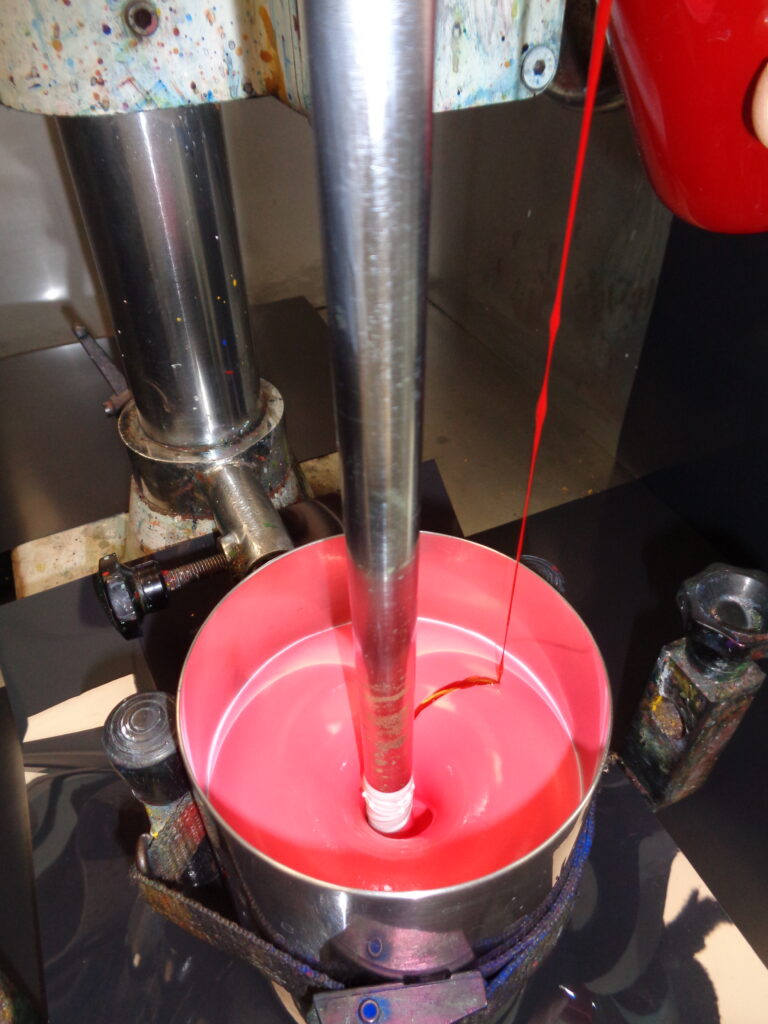Through an industrial process, we transform powder pigments into liquid dispersions, so that they can be used, mixed, and dosed more easily with the products used by our customers.
Thanks to the latest dispersion and micronisation technology that we use during our production process, and the strict quality control to which all our products are subjected, we can list some of the main advantages of using pigment paste over powder pigment:
- Excellent reproducibility between batches:
Both in terms of colourimetric (hue and colouring strength) and physicochemical parameters, we will always be able to supply our products with the same characteristics and our customer will not have any problems with the colour used in their products, as it will always be the same. With this we avoid colour differences, colour defects and colour yield. It is well known that working with powder pigments requires specialised personnel to mix colours and achieve repeatability between batches. Working with powder pigments is time consuming and it is very easy to make mistakes. The use of pigment pastes, therefore, ensures that the colour performance between batches is always the same and shade adjustment is facilitated, as it is easier to incorporate a small amount of paste into an already manufactured paint with minimal agitation.
- Reduction of production times:
The use of powder pigment involves complex two-stage production processes, dispersing and milling the pigment, which can require many hours in the factory. It is difficult to handle and requires a more laborious process to be used in automatic dosing systems in the factory. The use of pigment paste simply requires agitation to mix and homogenise the colour in the base used by the customer. It offers easier handling and enables automatic dosing. This results in cost savings, both in terms of factory man hours and energy costs. The cost of the paste is lower when considering the savings achieved through higher throughput, less mixing time, and higher productivity.
- Reduced cleaning times:
With the use of pigment pastes only the agitator needs to be cleaned, thus eliminating environmental soiling and costly clean-up of pigment dust generation in the environment. A clean plant gives a better-quality image and helps to meet environmental requirements in terms of waste reduction.
- Stock reduction:
The use of pigment paste allows our customers to stock uncoloured paints and make the colour they need on the spot. In contrast, the use of powder pigments involves the manufacture of minimum production quantities and generates stock of already coloured paint. With the use of pastes, the customer has more flexibility to prepare paint batches of different quantities on the spot. This also allows the paint manufacturer to provide an agile service to his customers. It is only necessary to have stock of the uncoloured base to be able to produce any colour at the desired time.
- Reduction of problems in paints:
It is very common that the incorporation of powder pigments during the manufacture of paints alters the absorption of polymers and fillers, modifying the behaviour. We can also find other problems such as temperature increase, undesired thickening, flotation of fillers, lack of wetting, reduction of fluidity and less colour yield. With pigment pastes we avoid all these annoying behaviours.
All of the above confirms that the use of a pigment dispersion facilitates the colouring process and is much more cost-effective in all respects than the use of powder pigment.



